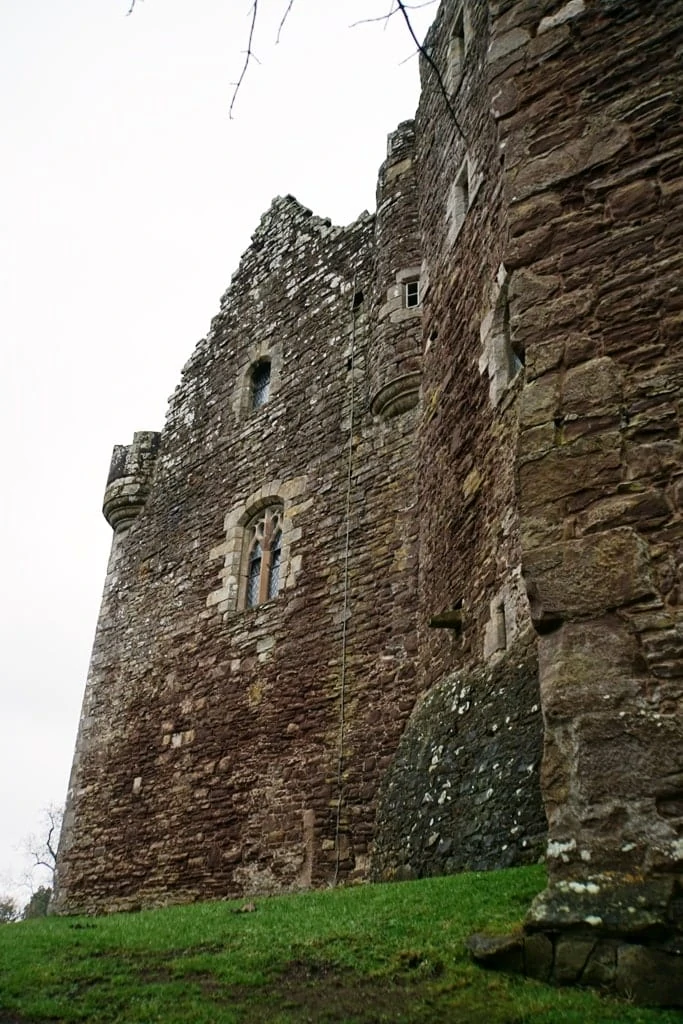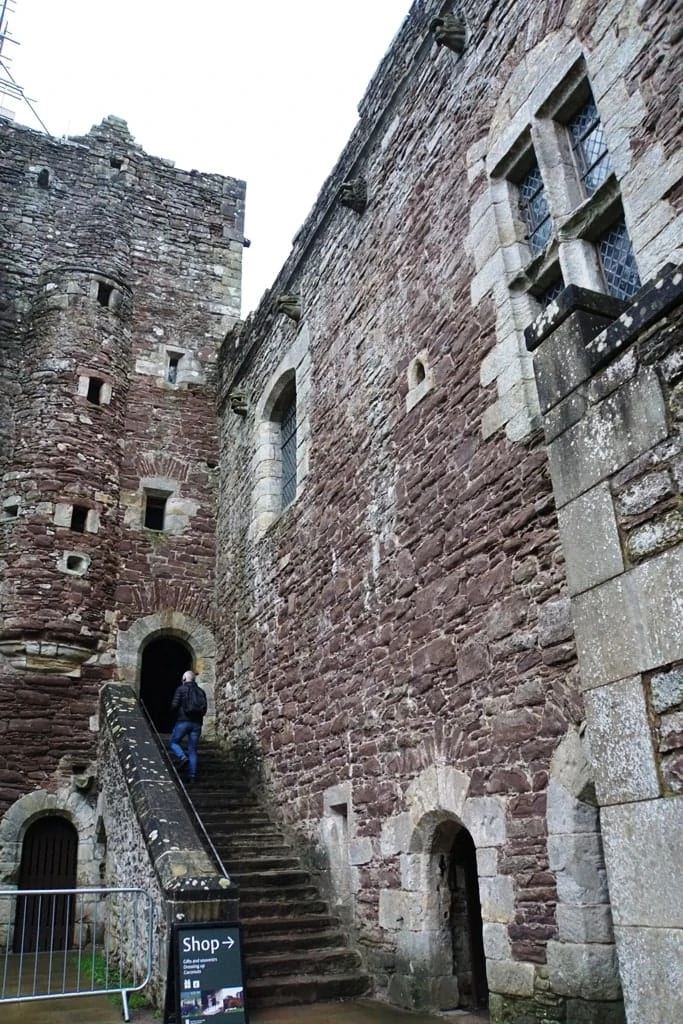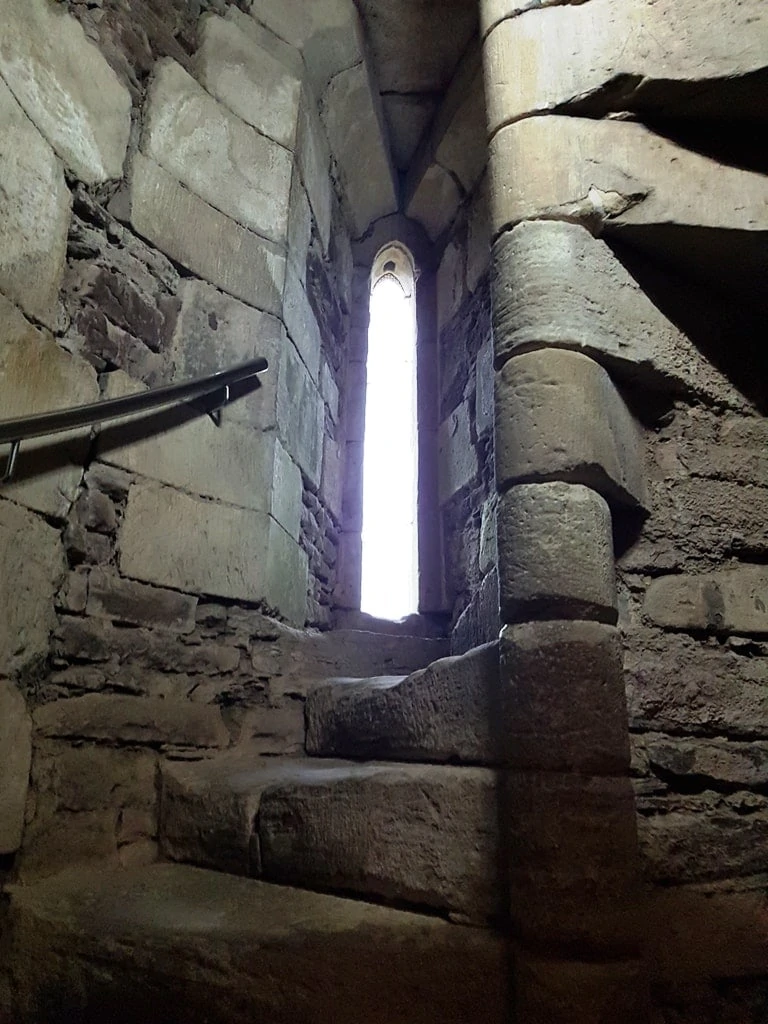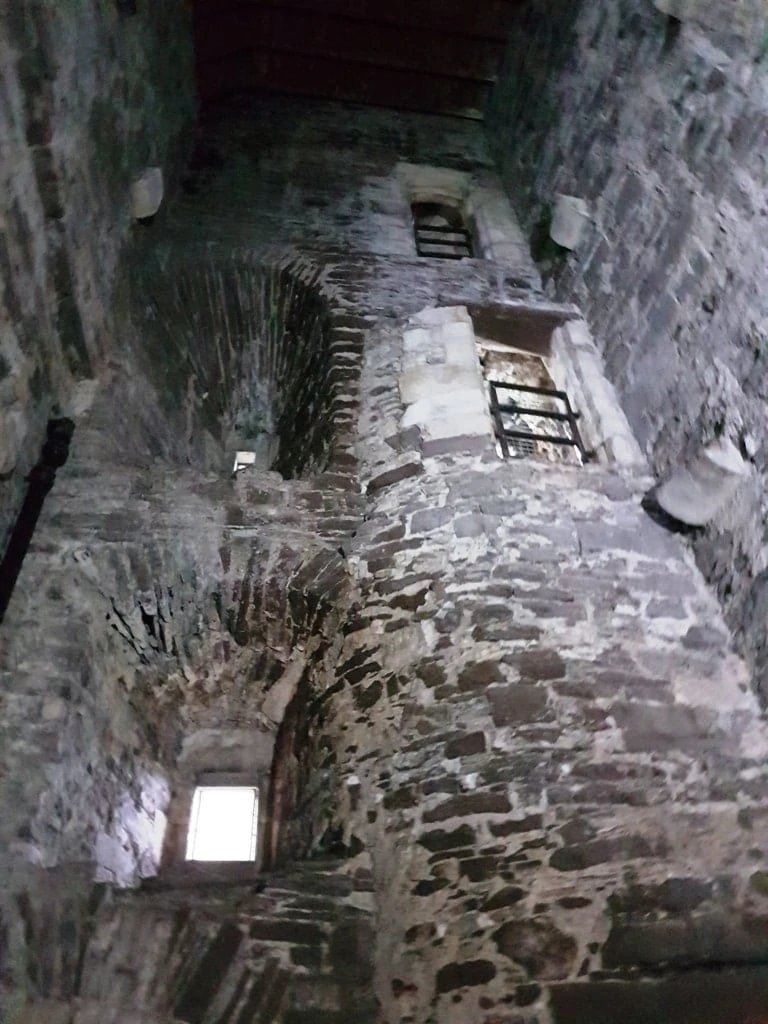Standing 8 miles north-west of the town of Stirling in Scotland, Doune Castle is a medieval fortification on the edge of the Scottish Highlands. Reaching its present form in the late 14th century, Doune reflects contemporary ideas of what a royal castle should be, with ranges of buildings surrounding a central courtyard.
The castle saw action during the Wars of the Three Kingdoms and the Jacobite uprisings and has subsequently found fame as a set for various film and television productions, including Outlander, Monty Python, and Game of Thrones.
You might also like: The best Scottish Castles to visit.
History of Doune Castle
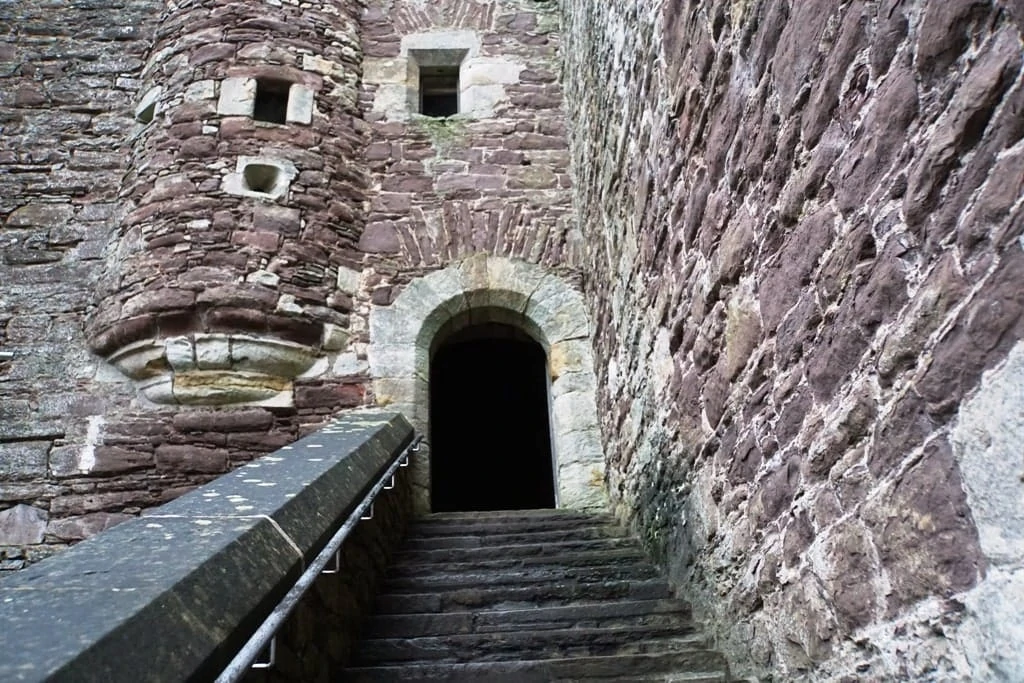
Thanks to its location at a confluence of Ardoch Burn and the River Teith, Doune has natural defences – bodies of water surround the castle on three sides, acting as natural moats which could hamper would-be attackers.
Fortifications have existed at the site of Doune castle from as early as the 1st century AD, when the Romans built defences there, probably in the form of ramparts and ditches to the south of the present castle. The name ‘Doune’, derived from the Gaelic word for ‘fort’ (dùn), also suggests that there were earlier fortifications on the site.
Although the castle was originally built in the 13th century, it was rebuilt in its current form during the 14th century, after sustaining some damage during the Scottish Wars of Independence. It was the Duke of Albany, Robert Stewart, who rebuilt Doune.
As the son of King Robert II (1371-90) and the brother of King Robert III (1390-1406), Robert Stewart required his castle at Doune to reflect his status as a member of the royal family. It is not known exactly when the castle was built, but construction work probably began soon after Robert acquired the land in 1361, and Doune was at least partially complete by 1381.
Despite never being king himself, Robert Stewart wielded a great deal of power when he became regent for his father in 1388. This powerful role continued throughout the reign of his brother, as King Robert III was considered to be particularly weak and infirm.
As a result, Doune became an important royal centre, and many charters were signed there. After the death of Robert III, the new king James I was captured by the English and Robert Stewart once again served as regent.
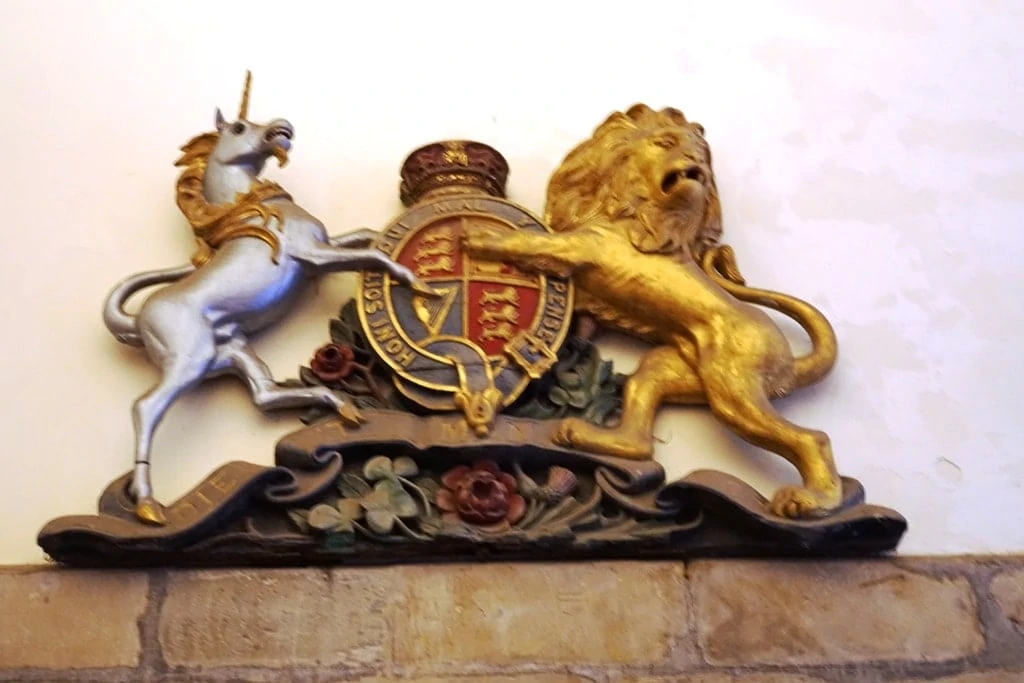
After Robert Stewart’s death in 1420, his estates passed to his son Murdoch, who was then executed in 1425 for treason by the newly returned King James I. At this point, Doune passed into royal possession and was used primarily as a hunting lodge. Through marriage, the castle passed into the hands of the Earls of Moray, who held it until the 20th century.
Doune’s notable history continued with Mary Queen of Scots, who lived at the castle for a time, dwelling in the apartments above the castle kitchen. King James VI captured a number of conspirators at Doune Castle in 1593, having discovered a plot against him which included the earls of Montrose and Gowrie.
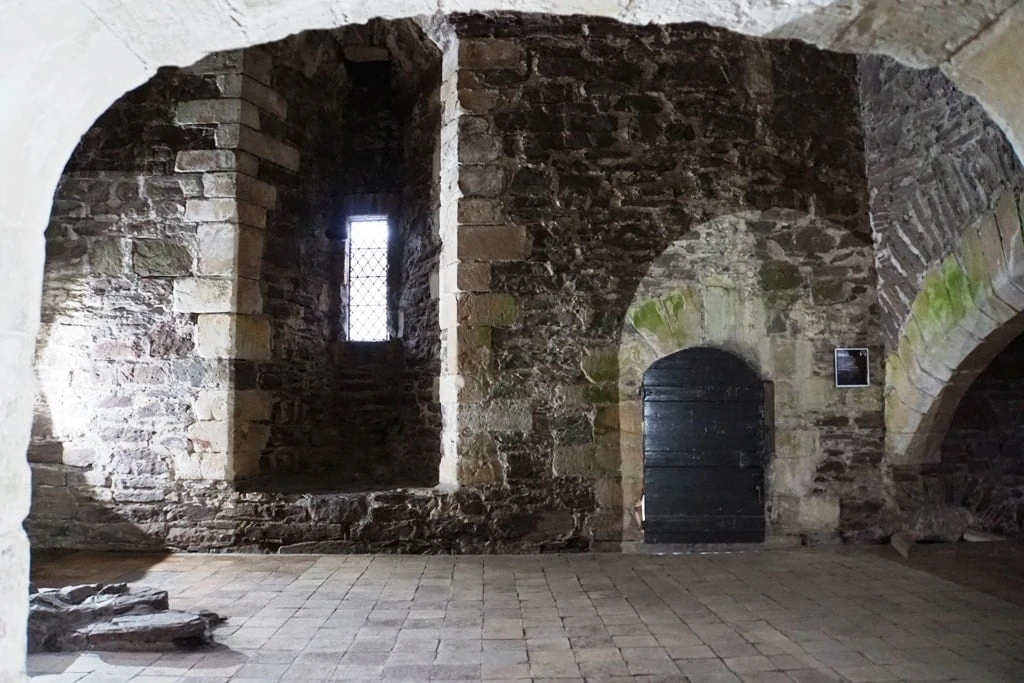
During the Wars of the Three Kingdoms, the castle was held by Royalist forces, and in 1654 an engagement was fought on the site as part of Glencairn’s Uprising against Oliver Cromwell’s occupation of Scotland, between Cromwellian troops and a force loyal to the crown.
Government forces occupied Doune Castle during the 1689 and 1715 Jacobite uprisings, although it saw more action during the Jacobite uprising of 1745.

On this occasion, it was taken and held by ‘Bonnie Prince Charlie’ (Charles Edward Stuart) and his Jacobite Highlanders and used as a prison for government troops captured at the battle of Falkirk.
Several of the prisoners staged a daring escape by typing together bedsheets and using them as a rope to climb out of a window – one of the fugitives was John Witherspoon, who later moved to America and became one of the founding fathers who signed the United States declaration of independence.
Slowly the castle fell into disrepair and by 1800 the roof had collapsed, and the castle was ruined. It was only in the 1880s that reconstruction efforts began under George Stuart, the 14th Earl of Moray.
Timber roofing was built, and the interiors of the castle were once again restored. In 1984 the castle was donated to Historic Environment Scotland by the 20th Earl of Moray and is open to visitors to this day.
Description of Doune Castle
Thanks to its location near the very centre of Scotland (and close to Stirling which has been called ‘the crossroads of Scotland’), Doune Castle is strategically important. It enjoys formidable natural defences, in the form of two rivers (Ardoch Burn and the River Teith) which protect the castle’s approaches to the east, west and south, and by steep slopes on three sides.
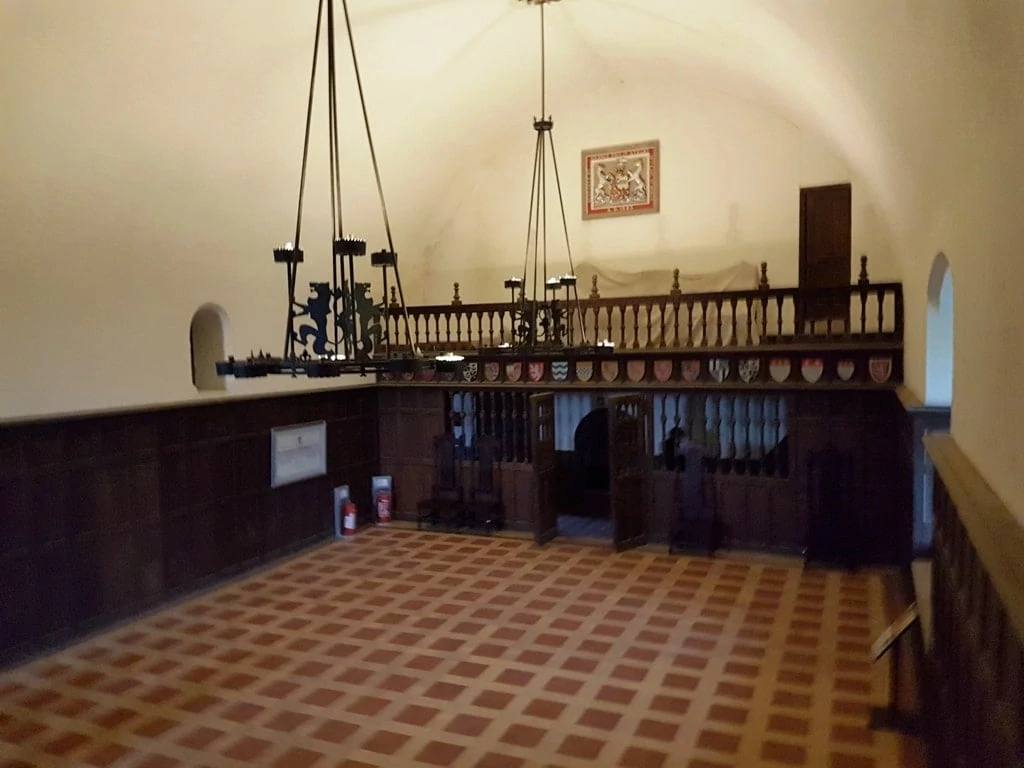
The main approach to the castle is from the north, and besiegers would have to overcome the earthworks, which consist of three ditches with a rampart or earthwork wall between them.
The lower storeys of the castle contain no windows or openings, except the entrance and a postern gate to the west, making Doune a very formidable fortification.

The curtain walls on the eastern and southern sides are 2 metres thick and 12 metres tall, and feature walkways on top complete with parapets facing both inwards and outwards.
Projecting turrets can be found at the corners and halfway along each wall, and there is a square turret with machicolations above the postern gate to the west.
The castle itself was built in sandstone rubble and is shaped like an irregular pentagon based around a central courtyard. The north and north-western sides of the courtyard are lined with buildings, while the southern and eastern sides are simply formed of high stone walls.
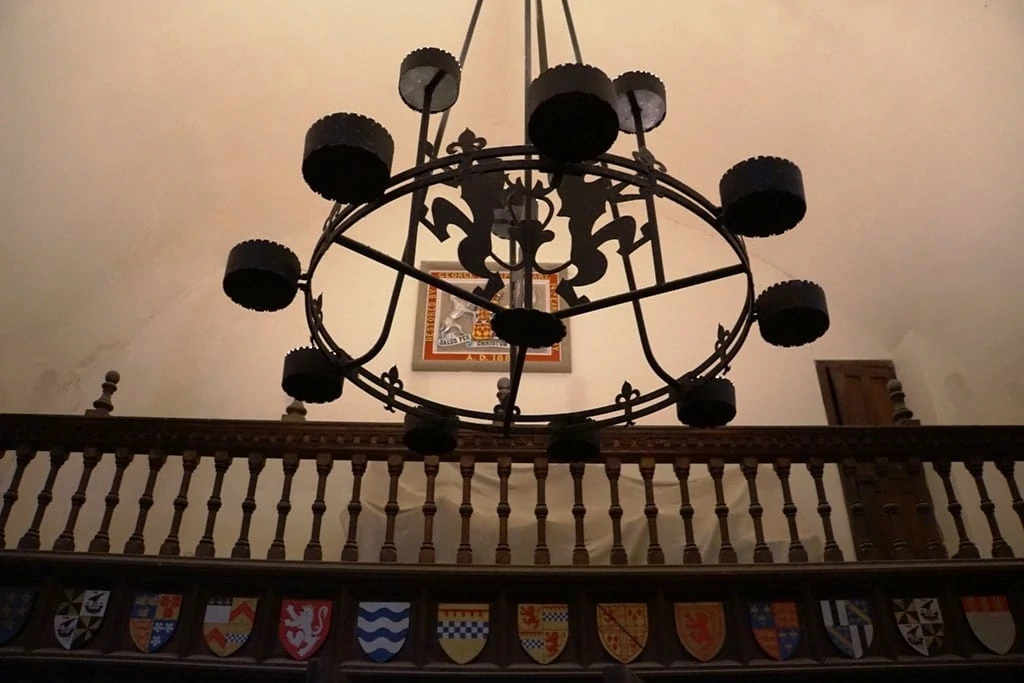
The castle is entered through a passage in the north-eastern tower, which also contains the main rooms. Once inside, external staircases in the courtyard lead up to the lord’s hall inside the north-eastern tower, the great hall situated next to it, and the kitchen which stands in a separate, smaller tower to the west.
The main tower, known as the Lord’s Tower, is a rectangular construction of 18 metres by 13 metres, standing an impressive 29 metres tall. The upper floors contain the Lord’s Hall and private chambers, while the lower levels feature guard rooms and gun loops for defence.
A machicolation below the northern window of the hall would have allowed defenders to drop missiles onto attackers below. To the west of the Lord’s Hall stands the Great Hall, which measures 20 metres by 8 metres.
Since it has no fireplace, it is assumed that this room would have been heated by a central fire, although the roof reconstruction that stands there today is speculative in its design.
The Great Hall is linked to the kitchen by two large service arches, through which provisions could be passed. Above the kitchen, are a set of guest apartments, consisting of two bed chambers and an audience chamber.
Large windows in the eastern and southern sections of the wall suggest that more buildings may have been planned for Doune Castle, such as a chapel.
Doune Castle as a filming location

Castle Leoch in Outlander
Thanks to its picturesque location and romantic appearance, Doune Castle has featured in many notable films and television shows. It was used as the location for the fictional ‘Castle Leoch’ in the Outlander TV show, an adaptation of the Outlander novels by the American author Diana Gabaldon about a nurse in 1945 who is mysteriously transported to the 18th century Scottish Highlands whilst on honeymoon in Inverness.
Doune Castle was used primarily in the first season of the show as the seat of Clan MacKenzie, with the great hall and courtyard featuring many times.
The castle kitchen was reconstructed on a film set to allow for easier filming. Doune was also used in another Scottish historical film, namely Outlaw King, a 2018 action-drama about Robert the Bruce, the 14th-century Scottish king who fought a guerrilla war against the English as part of the Scottish Wars of Independence.
Doune Castle in the Game of Thrones
The castle was also used in the pilot episode and episode one of Game of Thrones, the TV adaptation of George R. R. Martin’s A Song of Fire and Ice novels. Doune was used as the set for Winterfell, the ancestral home of House Stark and the political capital of the North. Interestingly, it is the only location in Game of Thrones filmed in Scotland, despite Martin having made comparisons between the North, and the climate and country of Scotland.
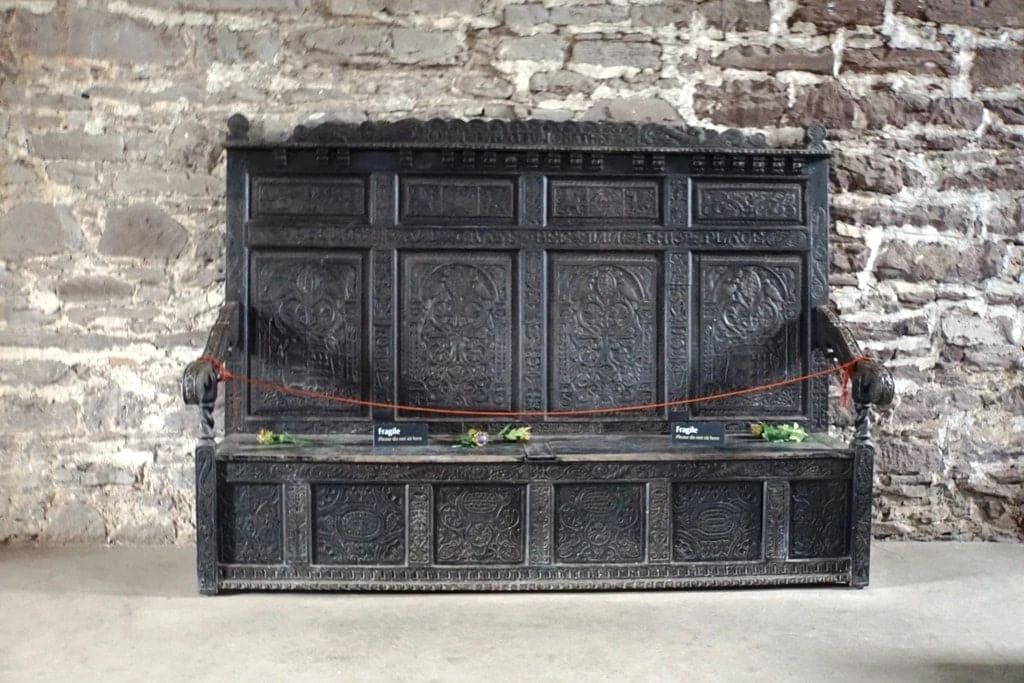
Doune Castle in the Monty Python and the Holy Grail
Finally, Doune Castle was used extensively as a location during the filming of Monty Python and the Holy Grail, a comedy film that is a parody of Arthurian legend and the middle ages. Originally, the producers of the film had permission from the national trust of Scotland to film in a number of locations – however, this permission was withdrawn at the last minute, leading to the crew having to use Doune Castle to represent several different castles.
This was mainly achieved through the use of tight camera angles, to ensure the audience would not be able to recognise that the same castle was being used to represent several different locations.
The Great Hall and courtyard were used to film scenes at ‘Camelot’, as well as the wedding which is disrupted by Sir Lancelot. The Duchesses hall was used to film the scene at ‘Swamp Castle’ where the prince is being held in the tower, and the kitchen was used to represent Castle Anthrax. The Trojan Rabbit scene was filmed at the approach to the castle.
Perhaps most famous of all is the scene where King Arthur and Patsy argue with the French garrison of the castle – this was filmed outside the east wall of Doune Castle.
Visitors Guide to Doune Castle
Aside from being a stunning and formidable castle with a fascinating history, Doune is a must-see for any fans of the films or television shows above. The castle is only a 15-minute drive from Stirling, which itself has good rail and bus links. A bus can also take you to the castle from Stirling.
Adult entry is £9 a ticket, while children pay a lower rate of £5.40 – family and concession tickets are also available.

